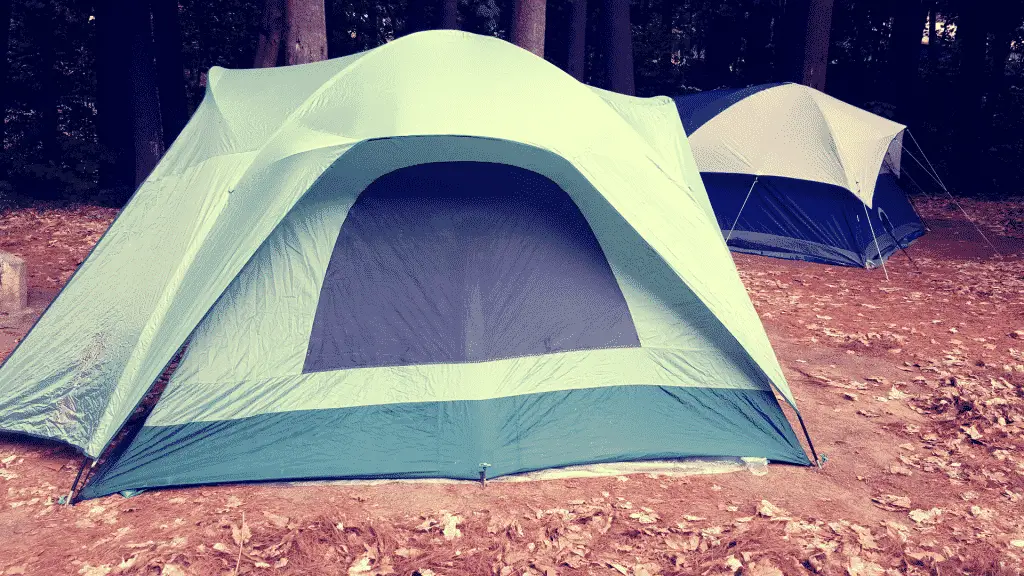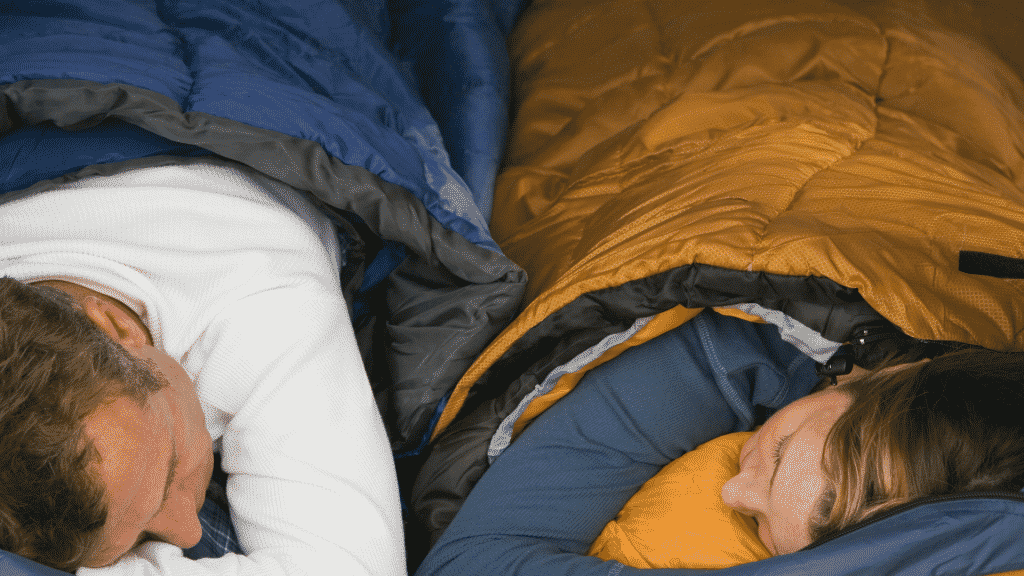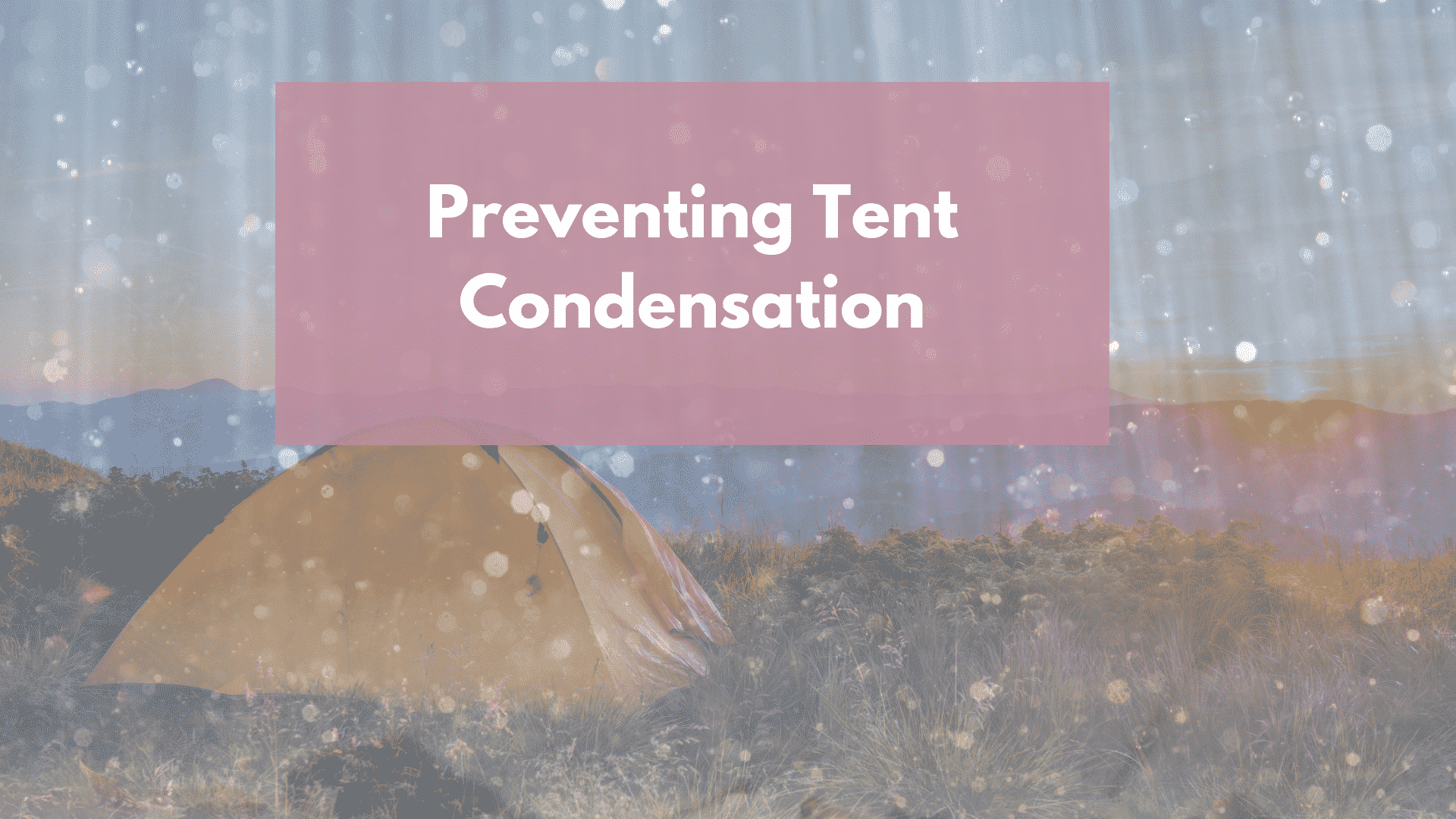Relaxing in your tent during a rainstorm is one of the most peaceful experiences on earth, but when those drips originate in my tent goosebumps run down my spine. You can work hard to waterproof your tent, but that doesn’t matter if the drips are caused by condensation.
How do you stop tent condensation? It’s impossible to stop tent condensation completely, but you can significantly reduce it. Reduce condensation by eliminating moisture sources and improving tent ventilation. With a well ventilated tent you should be able to keep condensation to a minimum.
Condensation can infiltrate even the best tents on the market. It’s impossible to find a tent that works in all situations. Climate, season, location and weather will all affect the type of tent you need.
There really is no one tent that will completely prevent condensation, but you can reduce it. I will explain how to prevent condensation in the rest of this article.
Table Of Contents
How to Stop Condensation in a Tent
All that moisture on the walls of your tent is caused by condensation. It happens whenever warm inside air contacts the cold outside. You can prevent condensation by ventilating your tent, minimizing moisture inside and finding the best place to setup camp.
You can’t completely prevent condensation, but you can significantly reduce it. So how can you prevent condensation? There are three main ways to prevent condensation.
- Minimize Moisture: Try to remove all external moisture sources inside your tent. You can’t eliminate all moisture, but you can remove wet items from your tent.
- Ventilation: Ventilation is key to preventing condensation. Open the windows/doors and hope for a breeze.
- Tent Placement: Try to pick the best place to pitch your tent. Setup your tent on dry ground hopefully under trees.
- Remove Wet Clothes: You really can’t control moisture caused by humidity and breathing, but you can eliminate external moisture sources. Set all your clothes out to dry during the day and don’t bring in any external sources of moisture.
- Avoid Streams, Lakes and Ponds: Water sources are always going to cause increased humidity in the surrounding area. Yes it’s nice to camp next to a water source, but you’ll have to ventilate well to reduce condensation.
- Avoid Low Points: Just like water sources low points will always accumulate moisture. Cold air pools around low points which will increase the temperature difference between your tent and outside air.
What Causes Tent Condensation?

Tent condensation is caused by the warm air inside the tent contacting the cold tent surface. It’s just like condensation on the outside of your drink. Your body heats up the tent so the air inside is warmer than the air outside. The heat draws in moisture and condensation occurs.
How to Prevent Condensation in a Tent
1) Tent Placement to Prevent Condensation
Pitch your tent on dry level ground with good drainage. Avoid setting up near the bottoms of slopes and sides of hills that tend to accumulate moisture.
Remember that trees are your friend on hot and humid days. Tree canopies trap warm air and stabilize the ambient temperature. So your rainfly and tent will be warmer and condensation will happen on the tree branches rather than your tent.
2) Eliminate All Sources of Moisture
Whenever I get caught in a downpour my first instinct is to strip down and toss my shirt into the farthest corner from my sleeping bag. Unfortunately that’s why I’m always dealing with condensation.
Wet items are guaranteed to add moisture to your tent, but sometimes you can’t stop control excess moisture. Most condensation is caused by the humidity in the air and moisture released with every breath you take.
Once you’ve picked out your site there’s not much you can do about humidity and the air you breath(not breathing isn’t much of an option). You can control where you hang your wet clothes to dry.
When trying to eliminate condensation hang your clothes out to dry during the day. And take off your wet boots, dry your dog and ditch soaked clothes before retiring for the night.
Is Moisture in Your Breath a Big Deal?
When you sleep at night you exhale moisture into the air. You’re releasing about 1 liter of moisture which is why you’re so thirsty in the morning. With 2 people you’re releasing 2 Liters, and so on with extra people.
Honestly, there’s nothing you can do to eliminate moisture from breathing, so you really don’t need to worry about it. With a well ventilated tent it really shouldn’t cause much of a problem.
3) Ventilate Your Tent to Eliminate Condensation
Air inside your tent is always going o be more humid than outside air. Tent fabrics are designed to be waterproof so they trap moisture inside the tent. The only way to get that humid air out is to ventilate your tent.
There’s absolutely no chance your rainfly is going to be dry in the morning, but with proper ventilation hopefully moisture stays on the outside of your tent. Reducing condensation is all about opening up your tent to breathe.
Open up all the tents windows and doors during the day. Roll up the rainfly doors and windows and try to get some breeze flowing. Unless you need absolute privacy, don’t close the tent up unless rain starts to fall.
Single-Wall vs Double Wall Tents to Reduce Condensation
Properly ventilating your tent and choosing the right campsite will go a long way to eliminate condensation, but there’s only so much you can do. Some tents simply aren’t designed to battle condensation.
The only way to truly eliminate condensation is to go with a single-wall tent. Single-wall tents are basically a glorified tarp which may or may not have a bug net(check this one out). They’re extremely well ventilated and don’t trap any heat so they’re horribly cold throughout most of the year.
Personally I would go with a double wall tent like this Kelty 4 Person Tent. It’s extremely well ventilated so condensation runs down the rainfly and should last a lifetime. Although the tents a bit pricey the thicker material and ventilated body style more than makes up for it.
What if My Sleeping Bag Gets Wet From Condensation?

Most sleeping bags are going to have a water resistant out shell that naturally repels water. The problem is that DWR (Durable Water Repellent) layer quickly wears off with use. You need to reapply a DWR spray to your bag every 5-10 uses or once per season(this is what I use).
If your sleeping bag does get wet/damp your only option is to hang it in the sun for a few hours. Stopping to dry wet gear is a normal everyday activity so suck it up and get into the habit of hanging drying lines.
Your Tent Fly Will Probably Be Wet in The Morning
If your tent is properly ventilated your fly should be a little damp come morning. This means moisture is escaping the living area and running down the exterior of your tent.
You can either wipe down the fly to dry or just wait a few hours and it will naturally dry in the sun. If you pack up a wet fly just try to setup a few hours before sunset so your tent can fully dry before nightfall.




